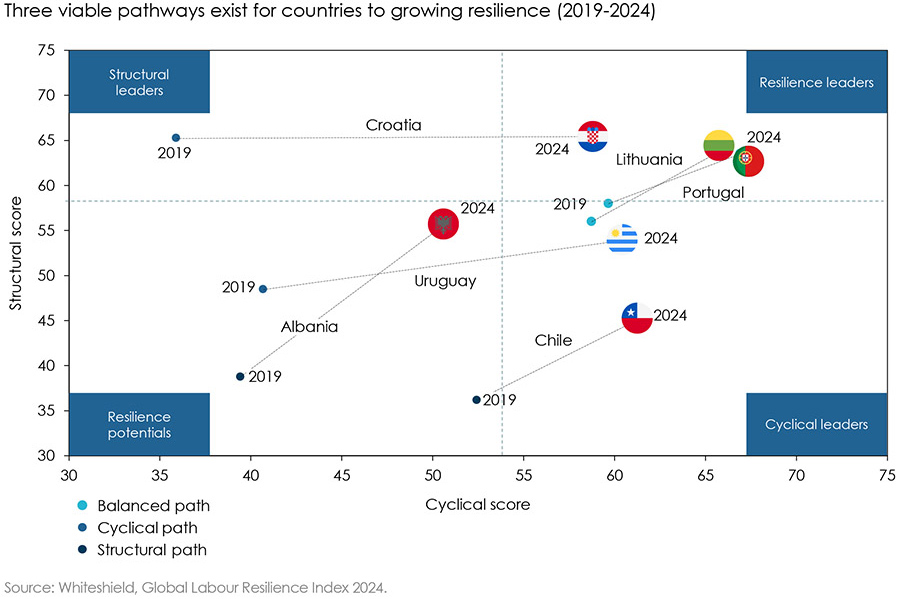European countries – spearheaded by Switzerland, Denmark and the Netherlands – have the most resilient labour markets in the world. That is according to a global benchmark from advisory firm Whiteshield.
The 2024 edition of the annual Global Labour Resilience Index (GLRI) shows Europe leads the way when it comes to labour markets, with Singapore being the only non-European country to be included in the top ten ranking.
Switzerland is home to the most resilient labour market in the world, according to the GLRI. Denmark placed second and the Netherlands placed third, followed by Singapore, Germany, Sweden Finland, Austria, Luxembourg, and the United Kingdom in tenth place.
These top rated countries exhibit stable macroeconomics, strong educational systems, inclusive labour markets, and very impressive innovation. The combination of being open societies with technologically advanced economies is a recipe for strength and growth.
Much of the reason Switzerland landed in first place is due to a variety of strong climate policies it has put in place. Sustainability goes hand-in-hand with a resilient labour market because it essentially future-proofs the economy.
Denmark, for its part, has pushed forward a progressive carbon tax scheme and has made great progress in renewable energy; and the Netherlands has invested big in green technologies for chemical and steel production, and has made good headway in reskilling workers.
How can countries improve their resilience?
The question of what can be done to improve labour market resilience does not have only one answer. In fact, different countries have taken very different approaches. For some, a more long-term outlook is preferable (structural path), while for others, shorter term policies lay the groundwork for more long-term resilience later (cyclical path).
Chile, for example, was quite successful with implementing a structural approach, while other countries were able to first boost their cyclical resilience before later building more long-term resilience.

About the Global Labour Resilience Index
The GLRI is based on a wide array of metrics and takes into account issues that affect countries around the world, like climate change, migration, and policy changes. The index aims to provide insight that can help countries strengthen their labour markets, with the imperative of transitioning to sustainable economies promising a bumpy ride ahead for the unprepared.
The index splits its attention to structural and cyclical resilience, with a score for each country in both categories:

Structural resilience means attention and action towards longer-term issues like demographics, macroeconomic stability, trade, and inequality. Cyclical resilience, on the other hand, is built by being well prepared for short-term shocks, being equipped for quick recover, and keeping up with major trends.
“The GLRI underscores the need for targeted policies and effective institutions to catalyse the ‘greening’ of the labour market amid structural changes in the global economy,” said Raed Safadi, chief economist at Whiteshield.
“Acting in anticipation can improve outcomes and this is where the different metrics of the GLRI offer help in monitoring performance, benchmarking developments, and drawing lessons of experience on the existing policies and institutions within each of the 136 countries included in the study.”



